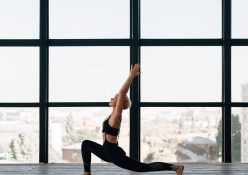Is #fitspo all that it seems?
Healthy dose of motivation or mental health meltdown just waiting to happen? Jade Taylor Cooke explores why we need to stop double-tapping all those Instagram abs.
There are currently over 56 million posts on Instagram with the hashtag ‘fitspo’ – that’s more than #throwbackthursday and #beyonce put together. And the most popular ‘fit-fluencers’ have followers who number in the millions. But just how healthy is it for us to be bombarded with these aspirational bodies daily?
Good idea gone bad?
On the surface, fitspiration is a pretty nifty concept – a constant supply of stimulus that, ostensibly, encourages us to be more active. Given that a sedentary lifestyle is one of the leading causes of preventable death in the world today, anything that gets you thinking, ‘You know what? I will go for that run!’ has got to be good, right?
Well, yes. And there are social-media accounts and websites out there that offer genuinely well-intentioned fitspo: Ideas for diversifying your workout, advice on rest and recovery, and healthy recipes over and above green juice and smoothie bowls. There’s lots to be said for the support and sense of community given by social media.
However, if the fitspo accounts you follow provide no more substance than a parade of sculpted bodies in expensive activewear, read on.

The dark side of fitspo
Research into the effects of Instagram use on body dissatisfaction is still in its infancy, but early findings point to a correlation between increased fitspo consumption and a decrease in self-esteem.
After all, positioning someone else’s body as #goals automatically categorises your own as not good enough.
Skin deep
One study, by Macquarie University in Australia, assessed the Instagram usage and fitspo consumption of 276 Australian and American women. The researchers concluded that ‘spending more time on Instagram was associated with greater self-objectification’, which they define as ‘the extent to which people value their appearance over other aspects’. And that’s the problem: A lot of fitspiration puts the focus on a very constructed image of health, rather than healthy living.

The Insta girl edit
If you look at everything on Instagram and think they’re just in-the-moment snaps taken in someone’s gym or kitchen, think again! Editing Insta pics isn’t a new trend – more and more people are talking about their editing habits. Like Australian fitness blogger Karina Irby. In one of the 27-year-old’s post (blasted to her 908k followers), Karina listed all of the editing that actually went into a photo of her in a bikini…
REALITY VS INSTAGRAM.
Every morning, I scroll though my Instagram feed and spy ‘Insta Girls’ posting unrealistic images of themselves. The girls I follow who portray these images have big followings, often with hundreds of thousands of girls looking up to them as a role model. I scroll though the comments and find young girls tagging their friends: ‘GOALS’ and, ‘OMG WHY DON’T I LOOK LIKE THIS?’ The truth is, these girls don’t looks like this. They look like you, like everyone.
I have copied the classic ‘Insta Girl Edit’ in my second image and listed below is what I have done to it:
• Full-body skin smooth
• Enlarged my booty
• Sucked in my tummy
• Sucked in my back
• Thinned out my arms
• Thinned out my quads
• Made my neck a tad skinnier
• Got ride of my scars and cellulite
• Made my breast rounder
• Lifted my booty
For the full article on #Fitspo, get your September issue of Fit Life.






